4-Benzylpiperidine

4-Benzylpiperidine structure
|
Common Name | 4-Benzylpiperidine | ||
|---|---|---|---|---|
| CAS Number | 31252-42-3 | Molecular Weight | 175.27000 | |
| Density | 0.997 g/mL at 25 °C(lit.) | Boiling Point | 279 °C(lit.) | |
| Molecular Formula | C12H17N | Melting Point | 6-7 °C(lit.) | |
| MSDS | Chinese USA | Flash Point | >230 °F | |
| Symbol |

GHS07 |
Signal Word | Warning | |
| Name | 4-benzylpiperidine |
|---|---|
| Synonym | More Synonyms |
| Density | 0.997 g/mL at 25 °C(lit.) |
|---|---|
| Boiling Point | 279 °C(lit.) |
| Melting Point | 6-7 °C(lit.) |
| Molecular Formula | C12H17N |
| Molecular Weight | 175.27000 |
| Flash Point | >230 °F |
| Exact Mass | 175.13600 |
| PSA | 12.03000 |
| LogP | 2.55750 |
| Index of Refraction | n20/D 1.537(lit.) |
Synonym:None known Section 2 - COMPOSITION, INFORMATION ON INGREDIENTS
Risk Phrases: None Listed. Section 3 - HAZARDS IDENTIFICATION EMERGENCY OVERVIEW
The toxicological properties of this material have not been fully investigated. Potential Health Effects Eye: May cause eye irritation. Skin: May cause skin irritation. Ingestion: May cause irritation of the digestive tract. The toxicological properties of this substance have not been fully investigated. Inhalation: May cause respiratory tract irritation. The toxicological properties of this substance have not been fully investigated. Chronic: No information found. Section 4 - FIRST AID MEASURES Eyes: Flush eyes with plenty of water for at least 15 minutes, occasionally lifting the upper and lower eyelids. Get medical aid. Skin: Get medical aid. Flush skin with plenty of water for at least 15 minutes while removing contaminated clothing and shoes. Wash clothing before reuse. Ingestion: Never give anything by mouth to an unconscious person. Get medical aid. Do NOT induce vomiting. If conscious and alert, rinse mouth and drink 2-4 cupfuls of milk or water. Inhalation: Remove from exposure and move to fresh air immediately. If not breathing, give artificial respiration. If breathing is difficult, give oxygen. Get medical aid. Notes to Physician: Section 5 - FIRE FIGHTING MEASURES General Information: As in any fire, wear a self-contained breathing apparatus in pressure-demand, MSHA/NIOSH (approved or equivalent), and full protective gear. During a fire, irritating and highly toxic gases may be generated by thermal decomposition or combustion. Use water spray to keep fire-exposed containers cool. Water may be ineffective. Material is lighter than water and a fire may be spread by the use of water. Vapors may be heavier than air. They can spread along the ground and collect in low or confined areas. Containers may explode when heated. Extinguishing Media: Use agent most appropriate to extinguish fire. Cool containers with flooding quantities of water until well after fire is out. Use water spray, dry chemical, carbon dioxide, or appropriate foam. Section 6 - ACCIDENTAL RELEASE MEASURES General Information: Use proper personal protective equipment as indicated in Section 8. Spills/Leaks: Avoid runoff into storm sewers and ditches which lead to waterways. Clean up spills immediately, observing precautions in the Protective Equipment section. Remove all sources of ignition. Absorb spill using an absorbent, non-combustible material such as earth, sand, or vermiculite. Do not use combustible materials such as sawdust. Provide ventilation. Section 7 - HANDLING and STORAGE Handling: Wash thoroughly after handling. Remove contaminated clothing and wash before reuse. Use with adequate ventilation. Minimize dust generation and accumulation. Avoid contact with eyes, skin, and clothing. Keep container tightly closed. Avoid ingestion and inhalation. Storage: Store in a tightly closed container. Store in a cool, dry, well-ventilated area away from incompatible substances. Section 8 - EXPOSURE CONTROLS, PERSONAL PROTECTION Engineering Controls: Facilities storing or utilizing this material should be equipped with an eyewash facility and a safety shower. Use adequate ventilation to keep airborne concentrations low. Exposure Limits CAS# 31252-42-3: Personal Protective Equipment Eyes: Wear appropriate protective eyeglasses or chemical safety goggles as described by OSHA's eye and face protection regulations in 29 CFR 1910.133 or European Standard EN166. Skin: Wear appropriate protective gloves to prevent skin exposure. Clothing: Wear appropriate protective clothing to prevent skin exposure. Respirators: A respiratory protection program that meets OSHA's 29 CFR 1910.134 and ANSI Z88.2 requirements or European Standard EN 149 must be followed whenever workplace conditions warrant respirator use. Section 9 - PHYSICAL AND CHEMICAL PROPERTIES Physical State: Liquid Color: clear, colorless Odor: benzene-like pH: Not available. Vapor Pressure: Not available. Viscosity: Not available. Boiling Point: 279 deg C @ 760.00mm Hg Freezing/Melting Point: 6.00 - 7.00 deg C Autoignition Temperature: Not available. Flash Point: > 112 deg C (> 233.60 deg F) Explosion Limits, lower: Not available. Explosion Limits, upper: Not available. Decomposition Temperature: Solubility in water: Specific Gravity/Density: .9970g/cm3 Molecular Formula: C12H17N Molecular Weight: 175.27 Section 10 - STABILITY AND REACTIVITY Chemical Stability: Stable under normal temperatures and pressures. Conditions to Avoid: Incompatible materials, ignition sources, strong oxidants. Incompatibilities with Other Materials: Oxidizing agents. Hazardous Decomposition Products: Nitrogen oxides, carbon monoxide, irritating and toxic fumes and gases, carbon dioxide. Hazardous Polymerization: Has not been reported Section 11 - TOXICOLOGICAL INFORMATION RTECS#: CAS# 31252-42-3: TM4728000 LD50/LC50: Not available. Carcinogenicity: Piperidine, 4-(phenylmethyl)- - Not listed by ACGIH, IARC, or NTP. Other: See actual entry in RTECS for complete information. Section 12 - ECOLOGICAL INFORMATION Section 13 - DISPOSAL CONSIDERATIONS Dispose of in a manner consistent with federal, state, and local regulations. Section 14 - TRANSPORT INFORMATION IATA Not regulated as a hazardous material. IMO Not regulated as a hazardous material. RID/ADR Not regulated as a hazardous material. Section 15 - REGULATORY INFORMATION European/International Regulations European Labeling in Accordance with EC Directives Hazard Symbols: Not available. Risk Phrases: Safety Phrases: S 24/25 Avoid contact with skin and eyes. S 28A After contact with skin, wash immediately with plenty of water. S 37 Wear suitable gloves. S 45 In case of accident or if you feel unwell, seek medical advice immediately (show the label where possible). WGK (Water Danger/Protection) CAS# 31252-42-3: 2 Canada CAS# 31252-42-3 is listed on Canada's NDSL List. CAS# 31252-42-3 is not listed on Canada's Ingredient Disclosure List. US FEDERAL TSCA CAS# 31252-42-3 is listed on the TSCA inventory. SECTION 16 - ADDITIONAL INFORMATION N/A |
CHEMICAL IDENTIFICATION
HEALTH HAZARD DATAACUTE TOXICITY DATA
|
| Symbol |

GHS07 |
|---|---|
| Signal Word | Warning |
| Hazard Statements | H315-H319-H335 |
| Precautionary Statements | P261-P305 + P351 + P338 |
| Personal Protective Equipment | Eyeshields;full-face respirator (US);Gloves;multi-purpose combination respirator cartridge (US);type ABEK (EN14387) respirator filter |
| Hazard Codes | Xi: Irritant; |
| Risk Phrases | R36/37/38 |
| Safety Phrases | S26-S36 |
| RIDADR | NONH for all modes of transport |
| WGK Germany | 3 |
| RTECS | TM4728000 |
| HS Code | 2933399090 |
|
~96% 
4-Benzylpiperidine CAS#:31252-42-3 |
| Literature: Nandi, Partha; Redko, Mikhail Y.; Petersen, Kathryn; Dye, James L.; Lefenfeld, Michael; Vogt, Paul F.; Jackson, James E. Organic Letters, 2008 , vol. 10, # 23 p. 5441 - 5444 |
|
~% 
4-Benzylpiperidine CAS#:31252-42-3 |
| Literature: Zhurnal Russkago Fiziko-Khimicheskago Obshchestva, , vol. 34, p. 511 Chem. Zentralbl., , vol. 73, # II p. 597 |
|
~92% 
4-Benzylpiperidine CAS#:31252-42-3 |
| Literature: Behloul, Cherif; Guijarro, David; Yus, Miguel Synthesis, 2004 , # 8 p. 1274 - 1280 |
|
~89% 
4-Benzylpiperidine CAS#:31252-42-3 |
| Literature: Kano, Shinzo; Tanaka, Yasuyuki; Sugino, Eiichi; Shibuya, Shiroshi; Hibino, Satoshi Synthesis, 1980 , # 9 p. 741 - 742 |
|
~89% 
4-Benzylpiperidine CAS#:31252-42-3 |
| Literature: Nandi, Partha; Redko, Mikhail Y.; Petersen, Kathryn; Dye, James L.; Lefenfeld, Michael; Vogt, Paul F.; Jackson, James E. Organic Letters, 2008 , vol. 10, # 23 p. 5441 - 5444 |
|
~95% 
4-Benzylpiperidine CAS#:31252-42-3 |
| Literature: Alinezhad, Heshmatollah; Tajbakhsh, Mahmood; Salehian, Fatemeh Monatshefte fur Chemie, 2005 , vol. 136, # 12 p. 2029 - 2033 |
|
~% 
4-Benzylpiperidine CAS#:31252-42-3 |
| Literature: Recueil des Travaux Chimiques des Pays-Bas, , vol. 65, p. 793 |
|
~% 
4-Benzylpiperidine CAS#:31252-42-3 |
| Literature: Zhurnal Russkago Fiziko-Khimicheskago Obshchestva, , vol. 34, p. 511 Chem. Zentralbl., , vol. 73, # II p. 597 |
| Precursor 6 | |
|---|---|
| DownStream 10 | |
| HS Code | 2933399090 |
|---|---|
| Summary | 2933399090. other compounds containing an unfused pyridine ring (whether or not hydrogenated) in the structure. VAT:17.0%. Tax rebate rate:13.0%. . MFN tariff:6.5%. General tariff:20.0% |
|
Selective suppression of cocaine- versus food-maintained responding by monoamine releasers in rhesus monkeys: benzylpiperazine, (+)phenmetrazine, and 4-benzylpiperidine.
J. Pharmacol. Exp. Ther. 329(1) , 272-81, (2009) Monoamine releasers constitute one class of drugs currently under investigation as potential agonist medications for the treatment of cocaine dependence. The efficacy and safety of monoamine releasers... |
|
|
Quantitative investigation on the metabolism of 1,3-butadiene and of its oxidized metabolites in once-through perfused livers of mice and rats.
Toxicol. Sci. 114(1) , 25-37, (2010) The industrial chemical 1,3-butadiene (BD) is a potent carcinogen in mice and a weak one in rats. This difference is generally related to species-specific burdens by the metabolites 1,2-epoxy-3-butene... |
|
|
Time-dependent inhibition of rat brain monoamine oxidase by an analogue of 1-methyl-4-phenyl-1,2,3,6-tetrahydropyridine (MPTP), 4-(4-chlorophenyl)-1,2,3,6-tetrahydropyridine.
Neurosci. Lett. 70(2) , 255-60, (1986) Inhibitory effects of some MPTP and MPP+ analogues on rat brain MAO activity were studied to further clarify the structure-activity relationships of MPTP neurotoxicity. Of the analogues tested, 4-(4-c... |
| 4-Benzyl-piperidine |
| 4-benzylpiperazine |
| 4-benzylpyperidine |
| 4-(phenylmethyl)piperidine |
| 4-Benzylpiperidine |
| Piperidine,4-(phenylmethyl) |
| Piperidine,4-benzyl |
| EINECS 250-535-0 |
| MFCD00006006 |
| Phenyl(4-piperidyl)methane |
| α-(4-Piperidyl)toluene |
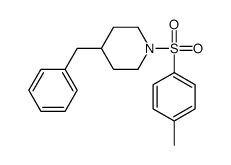


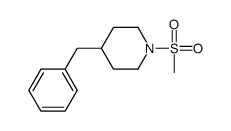
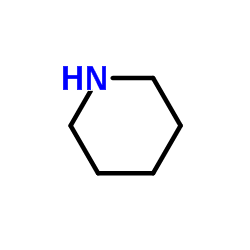



 CAS#:203187-19-3
CAS#:203187-19-3![4-[3-(4-benzylpiperidin-1-yl)prop-1-ynyl]benzene-1,2-diamine structure](https://image.chemsrc.com/caspic/232/302799-85-5.png) CAS#:302799-85-5
CAS#:302799-85-5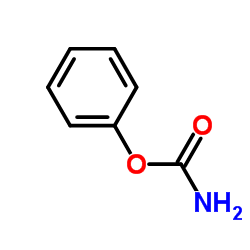 CAS#:622-46-8
CAS#:622-46-8![4-[(1-acetylpiperidin-4-yl)methyl]benzenesulfonyl chloride structure](https://image.chemsrc.com/caspic/193/333795-03-2.png) CAS#:333795-03-2
CAS#:333795-03-2![1-[4-[(4-methylsulfonylphenyl)methyl]piperidin-1-yl]ethanone structure](https://image.chemsrc.com/caspic/155/333795-04-3.png) CAS#:333795-04-3
CAS#:333795-04-3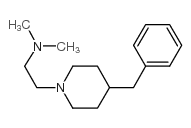 CAS#:3565-03-5
CAS#:3565-03-5![1-[4-[(4-bromophenyl)methyl]-1-piperidyl]-2,2,2-trifluoro-ethanon e structure](https://image.chemsrc.com/caspic/224/331765-80-1.png) CAS#:331765-80-1
CAS#:331765-80-1![1-[4-(phenylmethoxy)phenyl]-2-[4-(phenylmethyl)piperidino]propan-1-one structure](https://image.chemsrc.com/caspic/285/35133-39-2.png) CAS#:35133-39-2
CAS#:35133-39-2
